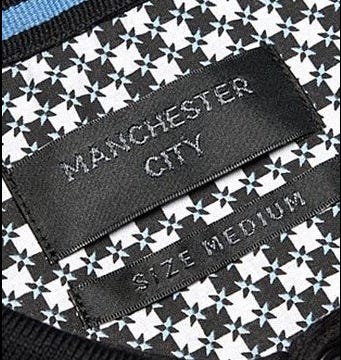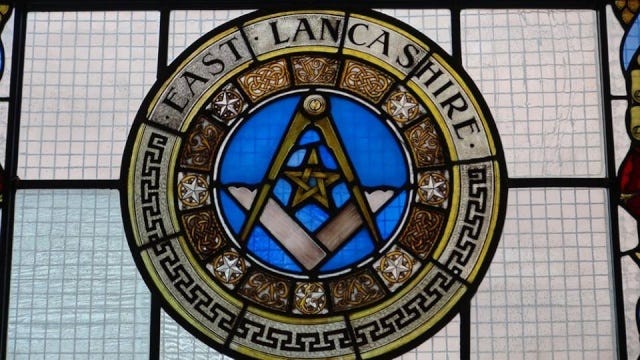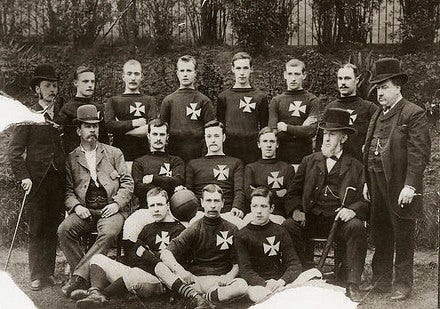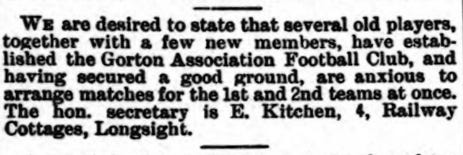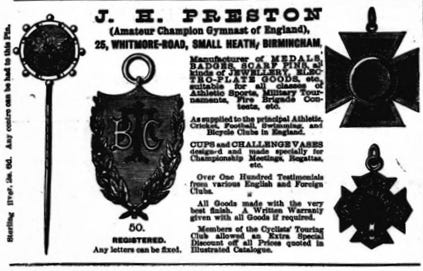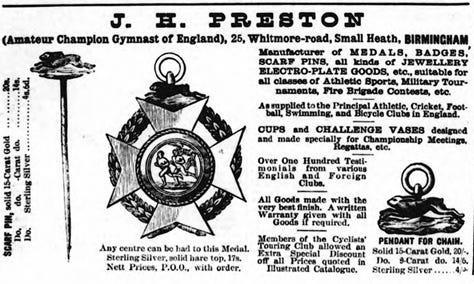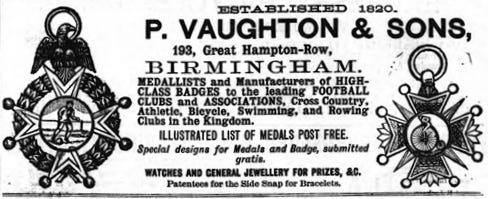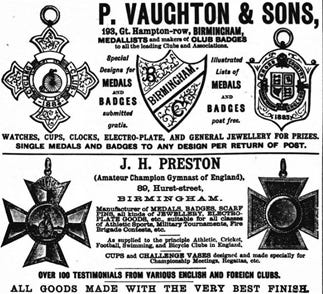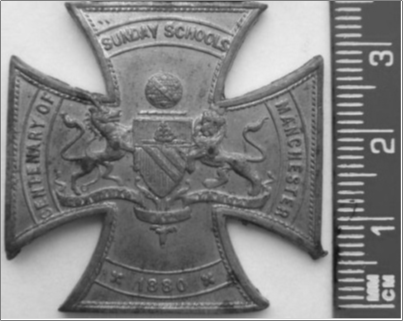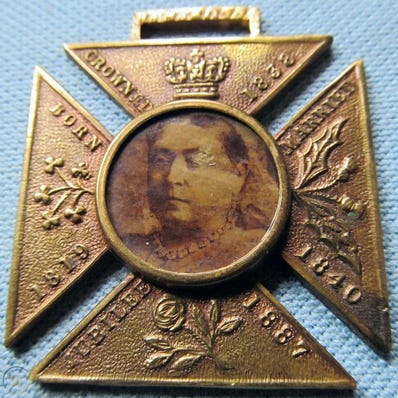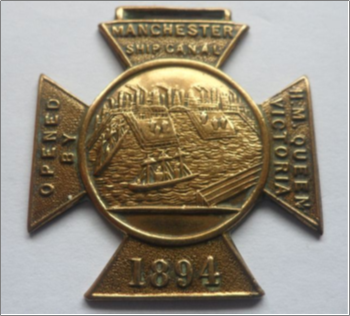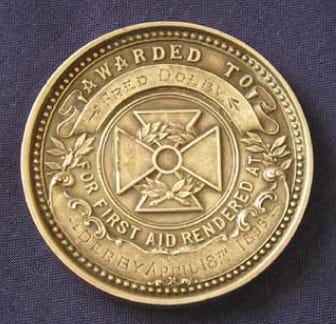Why Did We Wear A Maltese Cross On Our Shirts?
New evidence sheds light on the mystery of City's earliest badge
It’s an iconic image for Manchester City fans.
The first known team photograph, taken during the 1884-85 season, has been displayed on the outer walls of the Ethiad Stadium, while the Maltese Cross badge design—called a cross pattee—has featured in a range of clothing in the club shop (below).
But the reasons for the players wearing the cross patte on their shirts has for years been shrouded in mystery. Many theories have been advanced. In 2006 Those Feet: A Sensual History of English Football claimed it was the symbol of the White Cross Society, a temperance organisation created by social reformer Ellice Hopkins. Unfortunately, the author was unable to offer evidence to back up the claim.
City’s official website suggests it might indicate the club’s ties to Freemasonry. This is based on a claim published in 1984 that club official William Beastow, who was a member of a local Masonic Lodge, had presented the kit to the players. Another theory is that the cross represented the club’s ties to St Mark’s church, where Beastow had been a warden and many of the players parishioners.
However, the cross pattee has never been associated with the Church of England, probably because the symbol had been widely used in the Catholic Church for centuries. Nor has it ever been associated with Manchester Freemasonry, whose most commonly used symbols are a five-pointed star and the compass and square. Indeed it has only ever been used by one of the twenty Masonic Orders of England and Wales, the Order of Knights Templar and Knights of Malta.
It’s also now clear that Beastow did not supply Gorton’s team kit. A closer inspection of the team photograph (below) indicates that the kits were handmade. The shirts appear to be made from different materials and have varying necklines and irregularly-placed badges A striped pattern can also clearly be seen across the jersey of the player in the centre of the middle row.
Players probably supplied their own kit, quite likely made by their mothers (who would have sewn most of their clothes at that time). The fact that the club’s accounts for that season listed just £1 16s for “football requisites”, compared to the £4 or more it would have cost to kit out Gorton AFC’s first and second teams, confirms that it would have been the club’s members, each paying a shilling (5p) a month, who chose to have a pattee cross sewed onto their jerseys.
The colour of the jerseys may have been influenced in part by practicality, since their mothers would also have been expected to wash the kits after each game. This probably ensured that dark colours were the norm for amateur clubs and whites rare. And in an era before away kits, the use of badge designs was an important way of distinguishing between the teams, something fans complained about when pitches were muddy. Another appeal of the design would have been its simplicity, requiring just four identical triangles.
But did anything prompt or inspire the players to choose that particular design?
On Wednesday 29 October 1884, the announcement of Gorton AFC's formation appeared on the front page of Britain’s biggest weekly sporting newspaper, the Athletic News.
And this is what we find when we flip over to the back page.
Yep, it appears the answer to this football mystery had been less than an inch away the whole time.
The Athletic News was published in Manchester by Edward Hulton (who later became City’s chairman) and was a bible for young sportsman during this period. Heavily weighted towards football, it contained a mixture of news, gossip, and match reports, and would have been avidly read by Gorton AFC’s players.
Here’s another advert from 27 January 1885, four days before the team photo is believed to have been taken (more about that another time).
In fact, Maltese Cross-shaped medals appeared on virtually every back page of Athletic News from October 1882 to the end of the decade. Five out of the seven badge designs that were advertised prior to 1884 were Maltese Crosses, three of them cross pattees.
Initially these medals were designed to commemorate great sporting achievements. In August 1884, for instance, a man named Carlisle was presented with a “gold centred Maltese Cross” after reaching the Irwell Hotel in Broughton, Manchester to complete the 4,386th mile out of a 5,100 mile walk in 100 days. But by 1888 you could get one just for being a club secretary or treasurer.
The Victorians, you see, were very fond of medals. Sunday schools in particular loved handing them out as an inducement to keep reluctant young men actively involved. On 24 August 1880, less than three months before the creation of its football team, St Mark's celebrated the 100th anniversary of the Sunday school movement. According to a newspaper report, ‘in the afternoon the Sunday School scholars met at the schoolroom and, decorated with centenary medals, walked in procession to the church’. Sunday schools also handed out attendance medals. It might even have been the medal below.
You’ve turned up? Brilliant, have a medal. Some guy did something cool a century ago? Have a cross pattee medal and let’s go on a march.
It’s the Queen Jubilee? Have this medal.
A ship canal’s just opened? Have another one.
Throughout the late 19th century the cross pattee could also be found on medals awarded to Midland Railway employees who had administered first-aid.
The Midland Railway’s Belle Vue station wasn’t far from Gorton’s Pink Bank Lane ground. So it’s quite possible that a local railway employee, who attended Sunday school in 1880 then stayed to help out, could be in possession of three cross pattee medals by the time the photo was taken. Four or more if he had any success competing at sport.
So why was it such a commonly used medal design? In part two, I’ll explore what the cross pattee meant to people in the later Victorian period and explain why it was such an appropriate symbol for Gorton AFC to wear on their shirts.


